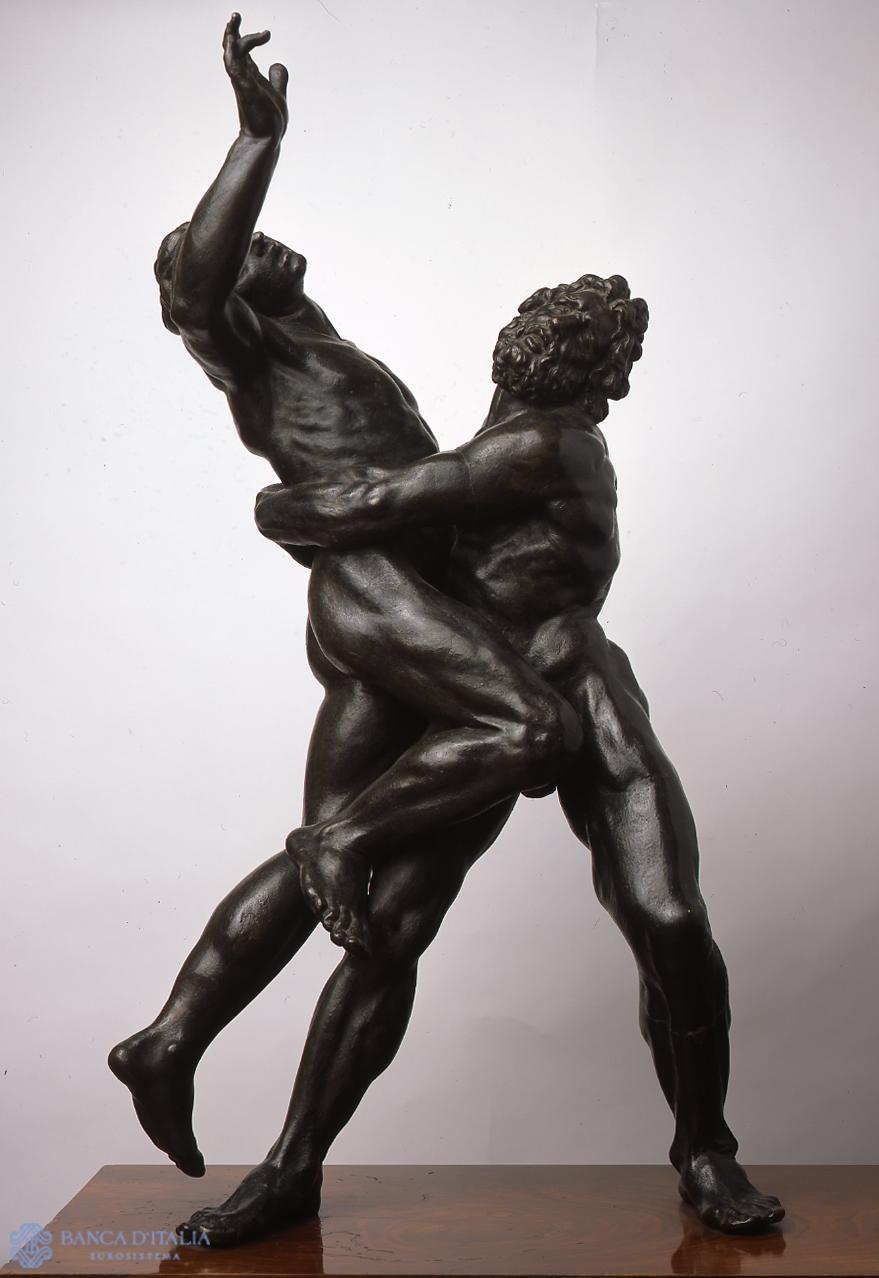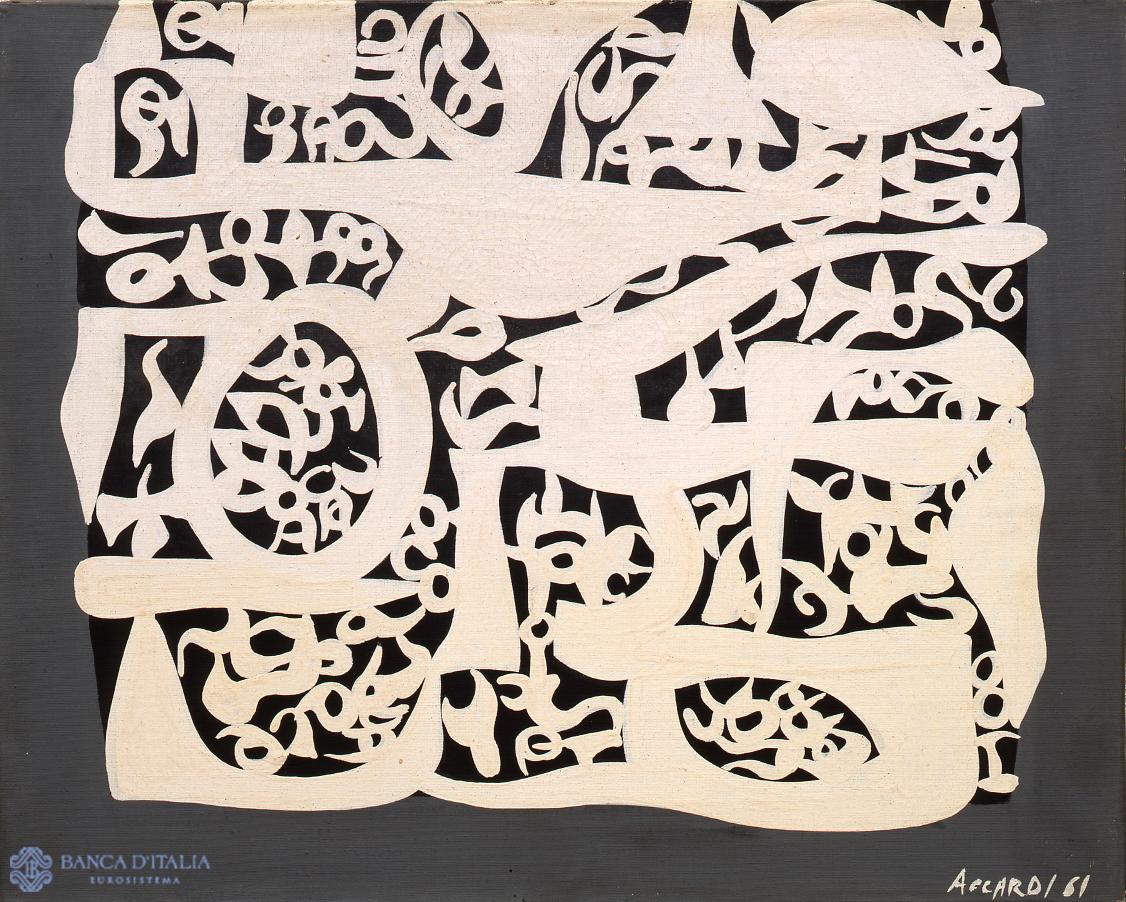Works of art
Works of art
Number of results: 282

Veduta di Arosio (Brianza)
Baldassare Longoni
This view of Arosio is a painting of the highest quality, produced just before the majestic high-mountain landscapes that characterized Longoni’s last period. The refined chiaroscuro fabric of the work hinges on the tall, dark tree in the foreground, which serves as repoussoir of the eye towards an evanescent horizon.
19th century AD
Landscape
Painting

Analisi
Bepi Romagnoni
On what we can perceive as a horizontal plane – albeit a sliding and anti-perspectival one – are a line of streaking, agitated ectoplasms, by now unrecognizable, timid witnesses of a reality transfigured into organic pulsions: greys, blacks, dirty whites, earth colours saturate those poor mangled bodies, offered up as one would a still life of smashed fruit.
20th century AD
Abstract
Painting

Hercules and Antaeus
His feet planted firmly on the ground, Hercules grasps Antaeus and lifts him into the air as the giant flails his arms and opens his mouth to cry out. According to myth, Antaeus, son of Poseidon and Gaia and King of Libya, was a giant who challenged all passers-by.
16th century AD
Biblical - Historical - Mythologic
Sculpture

Hercules Slaying the Nemean Lion
The small bronze statue captures Hercules at the moment of greatest physical exertion, his muscles tensed, his left leg bent on the back of the lion and his hands griping its jaws. The beast, overwhelmed by the superhuman strength of the mythical hero, arches its body and raises its front paws.
16th century AD
17th century AD
Biblical - Historical - Mythologic
Sculpture

The Infancy of Adonis
The painting illustrates the beginning of the myth of Adonis. His mother Myrrha, daughter of the King of Cyprus, had been transformed into the plant that bears her name, from the trunk of which a beautiful male child was born.
18th century AD
Biblical - Historical - Mythologic
Painting

The Buddha Shakyamuni in Meditation
The Buddha is seated on the ground, his right leg pulled up and his chin resting on his hands clasped around his knee. He wears a traditional shawl and his tightly curled ‘peppercorn’ hair recalls Indian prototypes; it is painted bright blue, the colour symbolizing the attributes of the Buddha, and in combination with the gold produces a lively ornamental effect.
14th century AD
15th century AD
16th century AD
17th century AD
8th century AD
Religious
Sculpture

Bianco chiuso
Carla Accardi
Large and small white signs, which seeing as they belong to an unknown alphabet point to nothing but themselves, are inscribed in a rectangle that occupies almost the entire canvas, and appear to mimic the surface of a TV screen. The painting is reminiscent of what Perilli and Sanfilippo were doing more explicitly during those years, in addition to other New Figuration artists.
20th century AD
Abstract
Painting

Vortice del vento verde
Carla Accardi
The title of the work alludes only to the background colour. Yet the full force of the emotional impact on the viewer comes from the matte yellow of the form that fluctuates in the pictorial space (as though it had been splashed onto the surface by a sudden gust of wind) and from the truly Matissian purple, used for the marks that drift aimlessly in the body of the ”figure” and the background.
20th century AD
Abstract
Painting

La pineta
Carlo Carrà
The pine woods theme was recurrent in Carrà’s depictions of the Tuscan seaside. Here it is developed in a particular composition. At the centre is a dense group of Mediterranean pines that block out the entire upper part of the canvas, the slim trunks filtering the viewer’s gaze to the houses in the background.
20th century AD
Landscape
Painting

Marina dopo il tramonto
Carlo Carrà
This painting of the shore at dusk presents a lonely view, with the twilight tones of sea, land and sky, a melancholy seemingly accentuated by the single boat abandoned on the beach. The marine theme is a constant of Carrà’s interwar work.
20th century AD
Landscape
Painting
